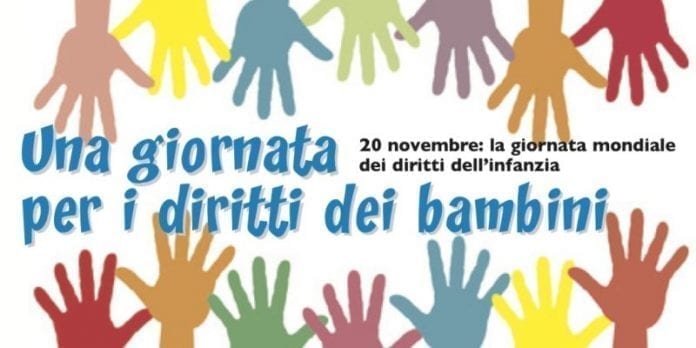Rome (Italy). November 20, date on which the world celebrates the International Day of the Rights of Children and Adolescents, marks the 30th anniversary of the approval of the UN Convention on the Rights of Children and Adolescents on the part of the United Nations General Assembly in 1989.
At 30 years after its approval, the Convention on the rights of Children and Adolescents, born to recognize the civil, social, political, cultural, and economic rights of boys and girls of the whole world, it remains a reference document on themes of great actuality in reference to human rights. Today, there are 196 Nations committed to respect the rights that it recognizes.
The Convention, which in the introduction recalls the Universal Declaration of Human Rights and the need to raise the child in a healthy and serene environment, is composed of 54 articles and three optional protocols and follows four fundamental principles to offer minimum safeguards for the protection of Children can provide guidance to governments for implementation.
The principles are: non-discrimination, that is equality of opportunity for all children and minors, without distinction of race, sex, language, religion; the best interest of the child who must have priority in any law, provision, public or private initiative; the right to life, survival, and development, understood not only on a physical level, but also on a mental, emotional, cognitive, social, and cultural level; listening to the opinions of the child and the corresponding duty for adults to take them into proper consideration.
The document is a legal text for international law on the basis of which rights and duties are created for the nations that adhere to it, who are required to submit a periodic report to a UN Committee on its application in their own Country.
In February 2019, the UN Committee on the Rights of the Child published a report highlighting the improvements made in terms of protecting Child Rights, together with some problems concerning child brides and early pregnancies, child soldiers, the exploitation of child labor, malnutrition, and other prohibited health and hygiene conditions.
The Convention recognizes the fundamental right to education, which must be free and compulsory, even if it is still denied in many countries. The protection of children’s rights is also one of the fundamental steps for the realization of the 17 Sustainable Development Goals of the United Nations 2030 Agenda and among these rights there is also the dream of a happy future for oneself and for one’s family.




















